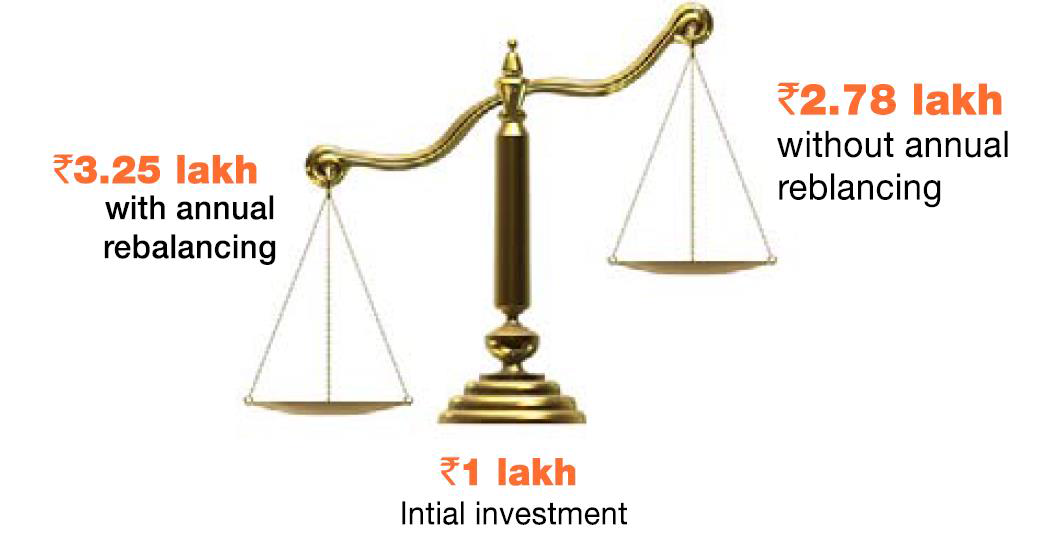Asset Rebalancing
As time goes by, equity and fixed income gain at different rates, thus disturbing the desired asset allocation. Shifting money between the two to restore that allocation is called Asset Rebalancing. Asset rebalancing must be the most useful and yet the most ignored of the ideas in the world of investing.
The way to rebalance your portfolio is to decide that a certain percentage of your investments should be in fixed income and the rest in equity.
Asset rebalancing means that instead of seeing the equity-vs-fixed question as a black-vs-white binary choice, you should be seeing it as a shade of grey. Once every year or so, you could ‘rebalance’ your portfolio. What this means is that if the actual balance has veered away from your desired one, you should shift money from one to the other in order to attain that percentage again.
Rebalancing makes a difference:
The Scenario: An investor invests Rs. 1 lakh on January 01, 2005. He puts half of his investment in equity and the other half in debt. So he starts off with Equity: Debt allocation of 50:50. For the sake of simplicity, we did not look at any annual additions to the portfolio. We just stuck to the initial amount.
For equity returns, we looked at the Sensex. For debt, we looked at the one-year fixed deposit rates. We then looked at the portfolio on January 01, 2015.
Where does he win?
If he maintained his Equity: Debt allocation of 50:50 by opting for annual rebalancing, he would end up with Rs.3.25 lakh. If he choose to ignore rebalancing and just left his portfolio untouched, his investment would be worth Rs. 2.78 lakh.

Powered by 
Watch out this space for more, next we will share document on “Prudent Investing” in our next article which has all the 3 techniques of prudent investing covered.
MUTUAL FUND INVESTMENTS ARE SUBJECT TO MARKET RISKS, READ ALL SCHEME RELATED DOCUMENTS CAREFULLY.




